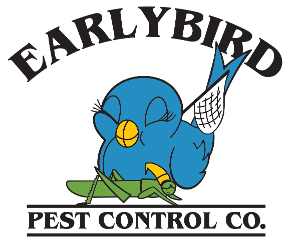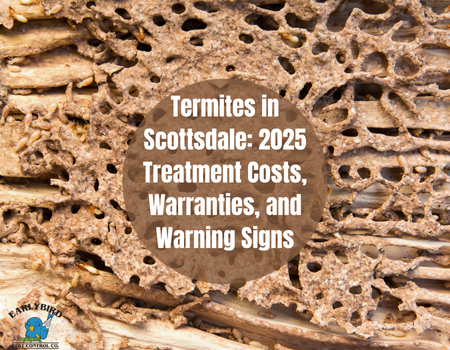Termites are a constant concern for Scottsdale homeowners. The warm, arid climate is ideal for these destructive pests, particularly subterranean termites, which are active year-round and often go undetected until damage is already significant. Arizona consistently ranks among the states with the highest levels of termite activity, making it essential for homeowners to understand treatment options, costs, and how to recognize the early signs of infestation.
Common Termites in Scottsdale
The most prevalent species in the area is the desert subterranean termite. These insects live underground and typically invade homes through cracks in the foundation or by building mud tubes along walls. They work silently, feeding on wood from the inside out, which makes them difficult to spot early. Although less common, drywood termites are also present and infest wood directly without soil contact, making them even more elusive.
2025 Termite Treatment Costs
The cost of termite treatment in Scottsdale depends on the severity of the infestation, the size of the property, and the chosen method. Localized spot treatments for small infestations may cost as little as $250 to $750, while full-perimeter soil treatments—common for subterranean termites—typically range from $1,200 to $2,800. Baiting systems, which use stations around the home to eliminate colonies, have a higher upfront cost of $1,500 to $3,500 and require ongoing annual monitoring fees of around $300 to $500.
In rare cases involving drywood termites, fumigation (or tenting) may be necessary. This method is far less common in Scottsdale but can cost between $2,000 and $4,500. Because prices vary widely, homeowners should seek multiple quotes from licensed pest control companies. A good estimate should include an inspection report, a detailed explanation of the proposed treatment, and follow-up visits.
The Importance of Warranties
When investing in termite treatment, the warranty is just as important as the treatment itself. Scottsdale pest control companies generally offer warranties lasting one to five years, and the most reliable warranties allow you to renew annually for a fee. This renewal ensures continued coverage and usually includes free re-treatment if termites return during the warranty period. Some warranties are even transferable, which can be a major selling point if you decide to put your home on the market.
Be sure to read the fine print, as warranty terms can vary significantly. Some cover only spot re-treatments, while others promise to reapply a full barrier if termites reappear. There may also be inspection requirements or additional fees to keep the warranty valid, so ask questions before you sign.
Early Warning Signs
Termites are notoriously quiet, but they do leave clues. Mud tubes on foundation walls, hollow-sounding wood, or paint that appears blistered or bubbling can all indicate an active infestation. Homeowners may also spot discarded wings from termite swarmers—winged termites that emerge in the spring or after rainfall to start new colonies. Drywood termites, on the other hand, leave behind tiny pellet-like droppings called frass, which can accumulate in small piles that resemble sawdust.
Another sign is difficulty opening or closing doors and windows. As termites consume wood, they can cause structural shifts that make these components stick or warp. If you spot any of these problems, you should contact a licensed pest control professional to schedule an inspection.
Ongoing Prevention
Preventative measures can greatly reduce the risk of termite infestation. Firewood, lumber, and other cellulose-rich materials should be stored at least 20 feet away from the house and kept off the ground. It’s also important to repair leaky plumbing and ensure that the soil around the foundation remains dry, as termites are attracted to moisture. Homeowners should maintain a visible gap between the soil and any wood portions of the house, such as siding or porch steps, and schedule annual termite inspections, particularly if the home has a history of problems.
Termites can cause extensive and costly damage, but with early detection and professional treatment, you can protect your property. In 2025, Scottsdale homeowners can expect to pay anywhere from a few hundred dollars for minor treatments to several thousand for full-perimeter solutions, but that investment is far less than the cost of repairing structural damage.
Choose a reputable pest control company that offers comprehensive inspections and a strong warranty. By staying vigilant for early warning signs and maintaining preventative measures, you can keep termites from becoming a long-term threat to your home.


Recent Comments